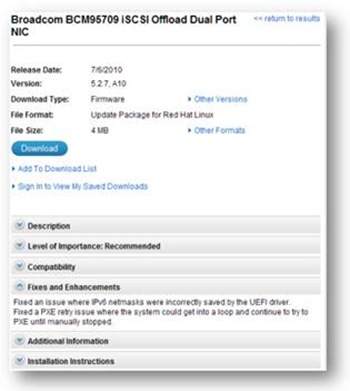I’ve been writing about the true meaning of “long-life” in terms of computer lifecycles and how hardware developers can get the most from both COTS and controlled lifecycle hardware platforms. When I get asked for a long life product, too often I find the requester hasn’t considered many of the issues which invest such a solution.
Consider necessary changes – No matter how successfully a product is designed it is impossible to prepare for all possible issues requiring improvements or remedies. For example, something as simple as a network adapter might be discovered to have a minor compatibility issue with certain switches or a new IEEE spec is released for FCoE, or something along those lines (see figure 1). In order to remedy the issue or add the required capability, a firmware update could be necessary. Well, if you are trying to ensure that no changes take place for the life of a product, how do you handle something like a necessary firmware update? Or, even worse, what happens if you purchase a warehouse full of product in order to maintain consistency for a long period? If a firmware update is required on all of those boxes, how do you deliver it?

Figure 1: Sample of firmware update’s errata remedy
Take a step further, what happens if you discover a hardware issue that requires replacing a component in the system? Do you go into that massive inventory and replace that component on each and every system and test them to ensure quality?
A better solution might be to re-evaluate the long life requirements. Can you handle minor changes to the platform, such a RAM suppliers, hard drive models, firmware revisions, and so on if they only change on known dates with a clear 6 month outlook? If that would work, you could purchase platforms only when needed and enjoy the benefits of not managing a large inventory (or paying someone else to manage it for you) and dealing with all the costs of warehousing. You could ensure any errata be addressed on all future purchases rather than having to remediate hundreds of stocked systems. These are all good things.
What are your requirements for a long life platform? Why do your customers require one platform be sold for over 3 years? Contact me with your input.